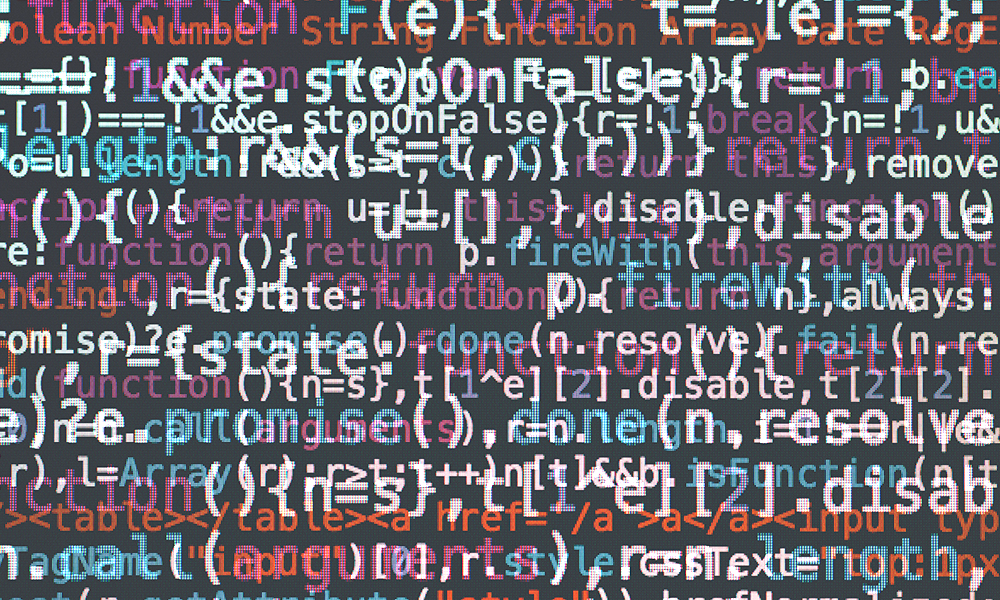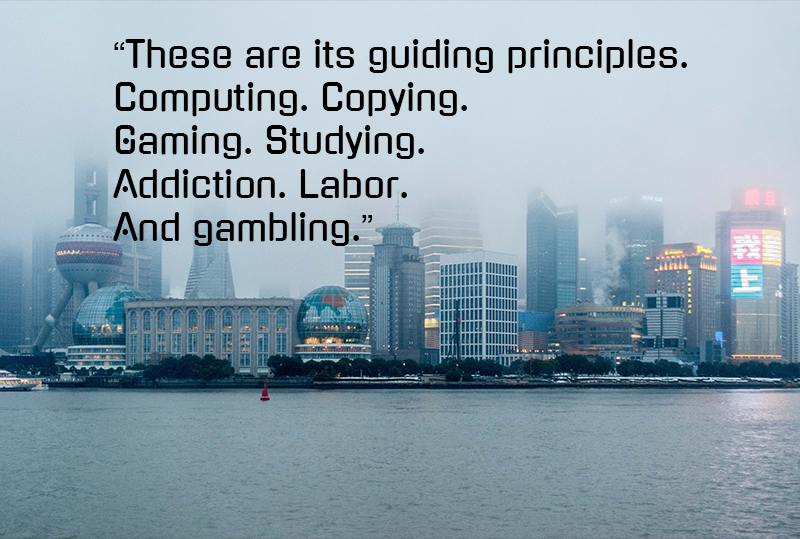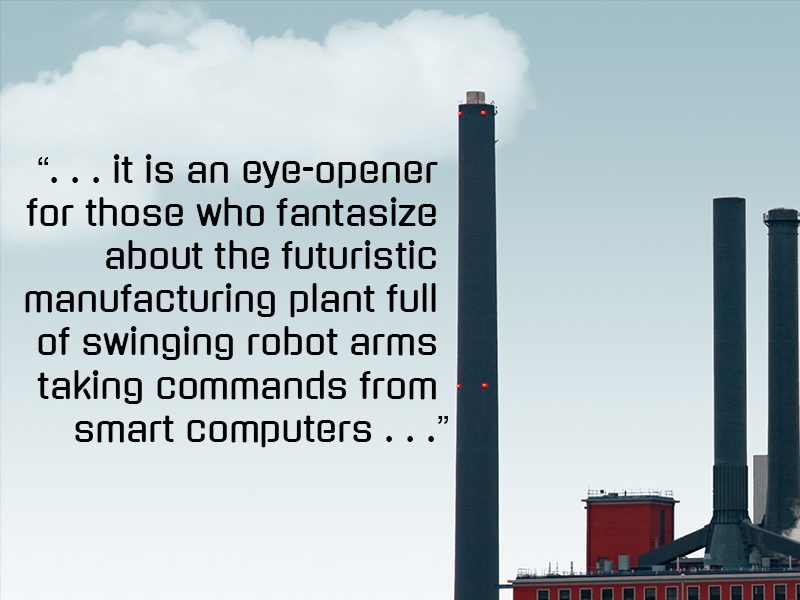Place a horse head from the Paleolithic paintings of Chauvet Cave beside footage from a Netflix show and compare them. Both are art, in the broadest sense, and both are (primarily) visual, but the similarities end there. In his essay, “The Work of Art in the Age of Mechanical Reproduction,” Walter Benjamin already anticipated most of the differences that you’d be able to find between the two: that the cave paintings were likely made for sacred ceremonial purposes and that the show is an economic product. That each of the cave’s images are fixed in both time and place while the television show’s come to us whenever we want, no pilgrimage required. And most importantly, that while the Netflix show is a counterfeit replicated endlessly in the form of code, the images in the cave are each authentic in their uniqueness. This presence of the singular in art, Benjamin called its “aura,” and the annihilation of aura by technology is the foundation of contemporary art.
It might seem counterintuitive to think so, but the popular dissemination of technology is necessary for the electronic image to function as conceptual art. This isn’t necessarily true with any other medium and has much to do with the value that we as postmodern consumers of images and memes place on a removed and ironic perspective. For example, conceptual video art didn’t reach its proper golden age until the 1960s, with the advent of relatively cheap portable recording equipment. There were, of course, films made before the middle of last century that were art, but it was mostly high art — The Battleship Potemkin, Metropolis, etc. — which still retained the heavy grandeur of Benjamin’s aura. The films themselves might have been mechanically reproduced and distributed, but they were experienced as singular events which communicated their own significance as too dense, too substantial, to be seriously considered as simply products for consumption.
But with the easy dissemination of recording and editing equipment, conceptual artists were free to do with the image what Duchamp did with sculpture. Its inner eye was ripped out and turned on itself to judge and criticize the culture from which it came. Early video installations such as Nam June Paik’s footage of the Pope’s visit to New York City or Wolf Vostell’s Sun In Your Head (1963) were bids at witnessing Western culture from the heightened ironic perspective of what the Greeks called the eirôn, the person who is “in on the joke.” The everyday aesthetics and technologies through which people perceived their world were inhabited like a mask in a performance of idea and critique that was often as funny as it was tragic. And if the technology used to create conceptual electronic art has evolved from video cameras to computers, that slightly sad sense of humor, the lonely chuckle of the eirôn, remains. You can hear it in its most accomplished form in the videos of Lawrence Lek.
Slow zoom out from a black and dark gold spiral that could be a seashell or an animal eye. Pensive organ loops skulk in the audial background. Red letters appear in English and Chinese pictographs: SINOFUTURISM. A robotic voice modulated to sound female flatly intones: “Sinofuturism. Sinofuturism is an invisible movement. A specter already embedded into a trillion industrial products. A billion individuals in a million veiled narratives. It is a movement based not on individuals but a million overlapping flows. . . ” The image abruptly shifts to a rudimentary computer-animated futuristic cityscape absent any renderings of the human form. Metallic tubes and ladders congest and move with an alien autonomy . . .
I can’t remember with absolute certainty what song was playing over Lawrence Lek’s video Sinofuturism (1839–2046 AD) when I first watched it on Vimeo, but I’m fairly sure that it was either “Pizza Day” by ESPRIT 空想 or something by Golden Living Room. Either way, it took me almost a minute and half into Lek’s intentionally lo-fi video assemblage until I realized that audio was playing from multiple sources. They fit together so well. They complimented each other. Leaving aside for the moment the online visual aesthetics that accompany vaporwave as a musical genre, the music that haunted my experience of Sinofuturism like an unobtrusive spirit of utopias past differed from Lek’s video only in that it was exclusively audio. Lek’s work, an audio/visual manifesto masterpiece filtered through the wry irony of contemporary performance art, is much more than, as vaporwave is, just a soundtrack to accompany hypnagogic reveries of societal decline. It’s the complete package. Music. Images. Words. Text. A modulated voice that might be human. The assemblage of the parts liberating them from remaining simply components. Lek’s project is world-creation.
•
It shouldn’t surprise you that there’s already a German term for Lek’s art. Carl Maria von Weber wrote ecstatically of E.T.A. Hoffmann’s 1816 opera Undine, that it was “an art work complete in itself, in which partial contributions of the related and collaborating arts blend together, disappear, and, in disappearing, somehow form a new world.” The complete art work made of multiple assembled genres and mediums that forms its own world: Gesamtkunstwerk. The total art work. The universal art work. The word was probably coined by the philosopher Trahndorff in his 1827 essay “Ästhetik, oder Lehre von Weltanschauung und Kunst,” but was popularized (as much as these things can be) by artists themselves. Novalis. Ludwig Tieck. Wagner. Especially Wagner. This wasn’t the stand-alone work of art by someone like Beethoven. Music played for the joy of the sound itself, without much reference to anything else. This was stage production, visual art, poetry, and sound mixing together to create myth. And at its most successful, as in Wagner’s Der Ring des Nibelungen, the work hits us with the strange and passionate intensity of a dream being remembered in perfect clarity. We feel as if we’ve carried something over with us from the other world.
Taut and arpeggiated strings as energetic as they are emotionally flat. Video game music. Chase sequence music. Computer-generated buildings swirl in a double-helix on a tropical island at night, creating themselves out of thin, pixelated air. The female voice: “But rather than resisting cultural clichés, Sinofuturism embraces seven key stereotypes associated with China. These are its guiding principles. Computing. Copying. Gaming. Studying. Addiction. Labor. And gambling.”
What is the video? Seeing as I did for the first time, entirely without context, it seemed like a secret message from a world which I sensed already existed but didn’t have any proof of. Or a conspiracy theory that cogently explains the random anomalies of everyday experience and gives marginalia excitement and meaning within a subterranean framework of a single hidden truth. The video describes itself as a “retro-manifesto” for a future that’s already here. The “future,” of course, being that ever just out of reach promise of utopian modernity which perpetually eludes us. The logic that animates our world but which we feel in our day-to-day lives only as a sort of gravitational pull or giant empty footprint. As Lek says in an interview with Time Out Beijing, “The reason conspiracy theories are so popular is that they give people a way to understand the world. Our cognitive map of the world is too impossibly complex right now. So, the thinking is that reality is like a branching tree, and if we go back to the very root of it, we can solve things. This isn’t true, of course, because the problem is never that simple. But the conspiracy theory is like a map to help us understand the world. So Sinofuturism is not a manifesto for the future, it’s more like a conspiracy theory to understand the present and maybe parts of the past, and maybe parts of the future as well, through these patterns.”
A popular trope in horror movies is that knowing a demon’s name gives you power over it. This is what Lek’s Sinofuturism feels like. An incantation to strip the present of its invisible power. An act of recognition that frees us from the amnesiac loop of the contemporary. And this is where Lek’s art has an important point of contact with the music genre vaporwave. If you don’t know what vaporwave is, you’ll think I’m a know-it-all for so casually mentioning it. If you do know what it is, you’ll think I’m unsophisticated for explaining it. But it’s worth pointing out that vaporwave, a genre of mostly repurposed lo-fi electronic sounds and noises meant to evoke nostalgia for a consumerist-utopian future which never came to be, has much in common aesthetically with Lek’s video. The lo-fi electronic music. The robotic voice-overs. The computer-animated city skylines. If vaporwave is a stoned teenager dreaming of wandering through a darkened and empty ’90s mall, then Sinofuturism is a stoned grad student dreaming of getting lost in an empty airport 20 years into the future. And yet, both seem to operate inside of the same temporal flux. Both seem willfully trapped inside of the clichéd narratives we tell ourselves about things like progress, technology, globalism, and capitalism. And both use irony as a critique and escape hatch from those clichés.
A video game in split screen. A green map, numbers, digital foliage, the faces of two players framed by small squares at the bottom of the image. Centered in red lettering: GAMING. An American male voice excitedly announcing a play-by-play. Distended atonal industrial sounds counterpoint the human voice. In the center of the screen a rectangle showing a darkened room full of servers. Their blue lights glow in symmetrical constellation.
Sinofuturism’s points of contact with the ironic aesthetics of vaporwave are important but limited. Vaporwave is sound accompanied by an occasional image, usually static but not always. Its critiques are embedded in the work, never completely made explicit. Lek’s video essay is larger. Being gesamtkunstwerk, Sinofuturism is a more complex assemblage of genres. It isn’t just a painting or a song. There’s no objective correlative stripped bare of rhetoric and laid etherized upon a table before us. The work is the music and the videos and the voice-over theorizing all moving together in a complex ecosystem. Which isn’t to say that it’s necessarily more sincere than the impishly ironic vaporwave. It could be ironic. Lek’s (but is it actually Lek’s?) fevered post-human theory about all the cultural clichés of Chinese society working together to form a hidden membrane of artificial intelligence very well might be a joke. It might also be true. The multi-genre tactics of Lek’s art complicate questions of sincerity. His intentions, as well as our own as viewers, become enmeshed in a dream-like ambiguity.
The viscousness of Lek’s world-building, the feeling we get of being enmeshed in his hypnagogic reveries, is timely. And his complex genre remixing is germane to the problems confronting contemporary art. Philosopher Timothy Morton’s theory of the “hyperobject” becomes useful to us here. Morton writes in his book Hyperobjects, “There occurs a crazy arms race between what we know and what is, in which the technology of what we know is turned against itself. The arms race sets new parameters for aesthetic experience action . . . ” This is classic post-Kantian ontology applied to aesthetics. Our inability to know things in any sort of supremely transcendent sense is a joke. Objects retreat from us as we reach out towards them. Or as Ezra Pound succinctly put it, “Nothing suggests itself.”
But some objects are more ineffable than others. These are what Morton calls “hyperobjects.” He defines them as being viscous (they “stick” to whatever is involved with them and resistance only strengthens the bond), nonlocal (if there is a localized appearance, it isn’t the actual or entire hyperobject), phased (they permeate our third dimension but aren’t confined to it), molten (they distort space/time and how it’s experienced), and interobjective (they can only be perceived as measurements of the effect they have on the relationships between objects). That might all sound dense, but it’s an easy concept to intuit by example. Climate change is a hyperobject. So is radioactive plutonium and styrofoam. The case could be made that contemporary war itself has become a hyperobject.
And so is artificial intelligence. Morton traces the origins of AI to the beginning of the Industrial Revolution and the invention of the steam engine by James Watt in 1784. “This universal machine,” Morton writes, “. . . could be connected to vast assemblages of other machines to supply their motive power, thus giving rise to the assemblages that turn the industrial age into a weird cybernetic system, a primitive artificial intelligence of a sort . . .” And if there is a Satan to be found in Lek’s postmodern Paradise Lost, it’s the alluring and seductively powerful hyperobject of artificial intelligence. The scope of its power. The depth of our desire for its influence. Our fear of control over it being revealed as a vain illusion.
What his video becomes then, the purpose of its complexity, isn’t so much a fun confabulation of genres, but a contemporary cubism that explodes the most elusive density of a hyperobject in order for us to experience it from simultaneous perspectives at once. Which is, of course, the only way to experience it at all.
LABOUR in block red letters. A smaller rectangle, a pristine automated factory floor devoid of humans, is framed by a larger square blurry with air pollution. The vague outline of a dense cityscape. A BBC-perfect female voice cheerily intones: “. . . it is an eye-opener for those who fantasize about the futuristic manufacturing plant full of swinging robot arms taking commands from smart computers . . .” An ominous atonal drone skulks under the human voice.
Lek’s gesamtkunstwerk isn’t a dour one, as menacing as it might sound. Paranoia, irony, eeriness, and ultimately humor, are the plaster that holds the project together. “This idea of alienation is really important for me,” Lek says in an interview, “and it’s related to Mark Fisher’s idea of ‘the weird’ versus ‘the eerie.’ ‘The weird’ is something that is present but seems strange because it appears out of place, like an alien spaceship on Earth. ‘The eerie’ is more to do with a sense of strangeness because something is absent. London totally evacuated, that’s eerie. It’s a helpful binary opposition in my own work. Let’s say I have a virtual world, you start with nothing, and so everything you put in has a strange presence. I try to construct scenarios where there is enough weird and eerie stuff so that people that come across my work really feel like this world is made for them. That’s why I’m doing what I’m doing.”
There’s a lot of humor in Lek’s eeriness, and it occasionally comes across with the overwrought slapstick quality of a B-grade horror film. The lo-fi synth music signaling impending doom. The rows and rows of pristine machines huddled together like the formation of an invading army. The humor can sometimes be invitingly schlocky. And it saves Sinofuturism from being an empty exercise. It keeps it from simply shaking its shackles. As the novelist Cortázar says in his recently published 1980 lectures, humor constructs as it deconstructs. It simultaneously builds as it unravels. The view that Lek’s work is simply a critique is wrong. Echoing in the crevices of his world-building are the barely audible articulations of life beyond the clichés or viscous grip of omni-present hyperobjects. Embedded in Sinofuturism is the hope that we’ll wake up laughing.•
All images courtesy of Unsplash. Image collage and manipulation by Isabella Akhtarshenas.








